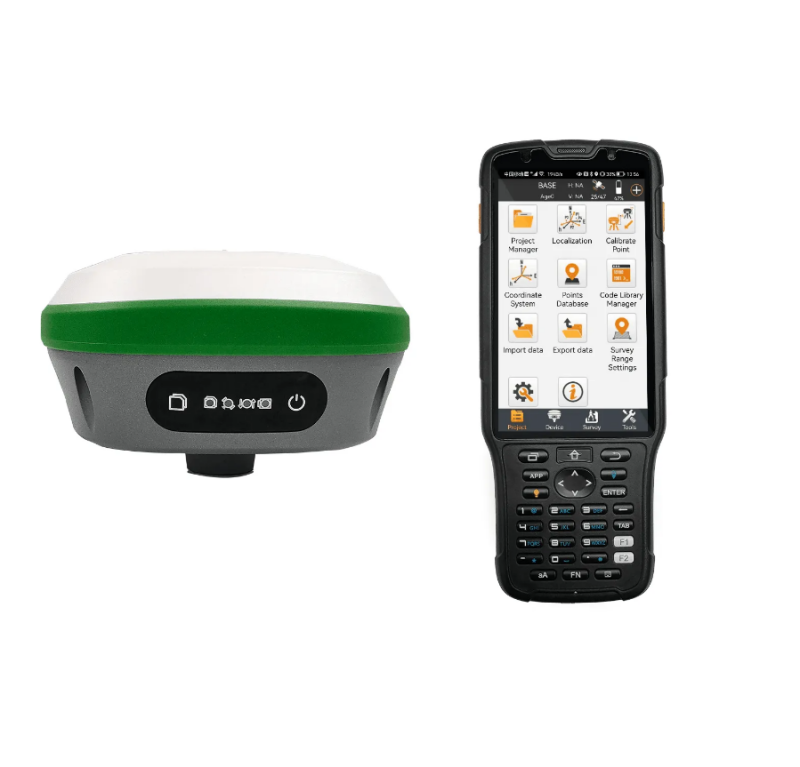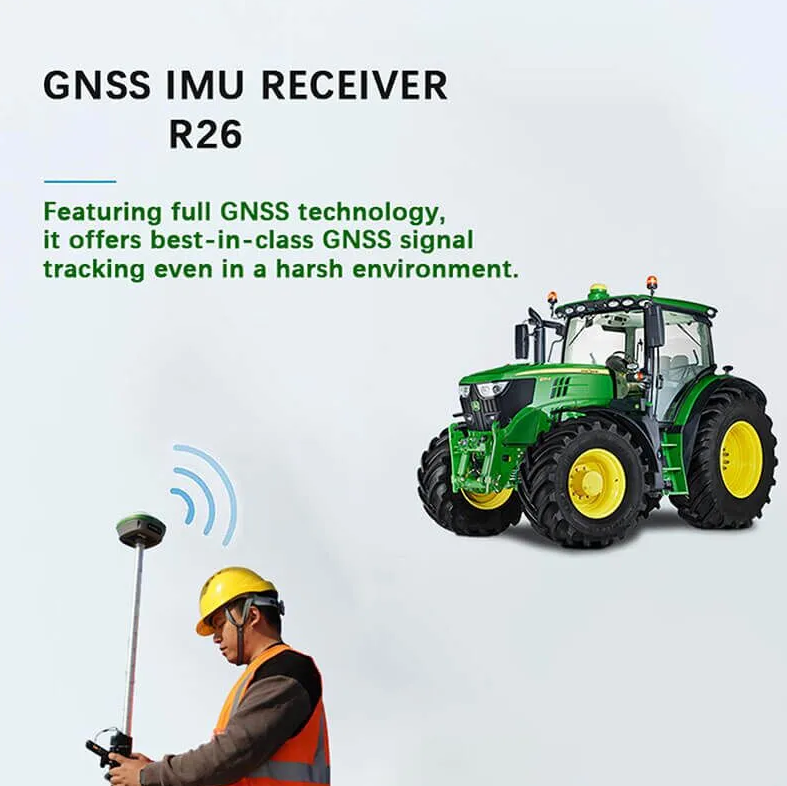As GPS technology advances and merges with cutting-edge farming techniques, its significance in tractor spraying operations grows ever more crucial. SMAJAYU's dedication to innovation and dependability guarantees that farmers can fully utilize GPS for Tractor Spraying systems to enhance accuracy, lower expenses, and champion sustainable agricultural methods. Embracing these technologies and keeping pace with upcoming innovations enables farms to lead in efficient, environmentally responsible farming practices.

Introduction to GPS in Agriculture
In modern agriculture, GPS (Global Positioning System) technology has revolutionized farming practices by enhancing precision and efficiency in various operations. Initially developed by the U.S. Department of Defense for military purposes, GPS has found extensive applications in civilian sectors, including agriculture. This technology utilizes satellite signals to pinpoint locations on Earth with remarkable accuracy, enabling farmers to optimize their activities like never before.
GPS plays a pivotal role in modern farming practices by providing farmers with real-time positioning data, which is crucial for tasks ranging from planting and harvesting to irrigation and, notably, tractor spraying. By integrating GPS into spraying operations, farmers can achieve precise application of fertilizers, herbicides, and pesticides, thereby maximizing crop yield while minimizing environmental impact.
Benefits of GPS for Tractor Spraying
Precision and accuracy are paramount in tractor spraying operations, where the right application at the right time can significantly impact crop health and productivity. GPS for Tractor Spraying systems allow for precise mapping of fields and application zones, ensuring that chemicals are applied uniformly and in optimal quantities. This precision not only improves crop health but also reduces input costs by minimizing wastage of expensive chemicals and decreasing fuel consumption due to optimized routes and fewer passes across the field.
Moreover, GPS for Tractor Spraying technology contributes to environmental sustainability by reducing chemical runoff into water bodies and minimizing the overall environmental footprint of farming operations. By accurately applying chemicals only where needed, farmers can mitigate the potential negative effects on soil health and nearby ecosystems, promoting sustainable agricultural practices.
Revolutionizing Tractor Spraying with SMAJAYU's R26 Surveying Rover
In the realm of modern agriculture, precision is paramount. SMAJAYU, a leading manufacturer in agricultural technology, has introduced the R26 Surveying Rover, a revolutionary GPS system tailored specifically for tractor spraying applications. This advanced receiver integrates cutting-edge GNSS (Global Navigation Satellite System) capabilities, boasting centimeter-level positioning accuracy. It harnesses a dual-band satellite and internet-delivered corrections service, ensuring precise location data even in challenging environments. With support for multi-satellite systems and full-band satellite signal reception, the R26 sets a new standard for accuracy in agricultural operations.

The R26 Surveying Rover from SMAJAYU represents a significant leap forward in precision agriculture. Designed to meet the demanding needs of field operations, it leverages Beidou/GNSS technology coupled with a high-precision inertial navigation RTK (Real-Time Kinematic) receiver. This integration not only enhances positioning accuracy but also provides robust orientation capabilities crucial for effective tractor spraying. Equipped with a built-in large-capacity battery and memory card, the R26 ensures uninterrupted operation during extended field sessions. Its Bluetooth, radio, and inertial navigation modules further contribute to seamless connectivity and operational efficiency.
Benefits of SMAJAYU's GPS Systems for Tractor Spraying
Implementing SMAJAYU's GPS systems offers farmers several key benefits that contribute to improved productivity, cost-efficiency, and sustainability in agriculture:
Precision and Efficiency: By leveraging GPS technology, farmers can achieve precise application of chemicals, ensuring optimal crop protection and health.
Cost Savings: Reduced chemical usage and optimized fuel consumption lead to significant cost savings over time, enhancing the profitability of farming operations.
Environmental Sustainability: Minimizing chemical runoff and environmental impact through precise application contributes to sustainable farming practices and regulatory compliance.
Choosing the Right GPS System for Tractor Spraying
When selecting a GPS system for tractor spraying operations, farmers should consider several critical factors to ensure compatibility and effectiveness:
Accuracy Specifications: Evaluate the system's GPS accuracy and positioning capabilities to ensure precise application and mapping across different field sizes and terrains.
Compatibility with Tractor Models: Ensure that the GPS system is compatible with various tractor models commonly used in your farming operations to facilitate seamless integration and optimal performance.
Integration with Farm Management Systems: Choose a GPS system that integrates smoothly with existing farm management software and hardware, allowing for streamlined data management and operational efficiency.
Case Studies and Success Stories
Examples of Farms Implementing GPS for Spraying
Across the agricultural landscape, numerous farms have embraced GPS technology for tractor spraying with notable success. For instance, Farm A, located in the Midwest, integrated SMAJAYU's GPS systems into their spraying operations for corn and soybean fields. By precisely mapping their fields and utilizing automated guidance, Various Farms achieved more accurate application of herbicides and fertilizers, resulting in healthier crops and increased yields.

Quantifiable Benefits of Adopting GPS Technology
The adoption of GPS technology for tractor spraying yields tangible benefits for farmers. Studies have shown that farms using GPS systems experience significant reductions in chemical usage—up to 15% or more—due to precise application techniques and minimized overlaps. This not only lowers input costs but also reduces environmental impact by decreasing chemical runoff into water sources.
Moreover, GPS-equipped farms report enhanced productivity through streamlined operations. By eliminating guesswork and manual adjustments, farmers save time and labor, allowing them to focus on other critical tasks during peak seasons. Improved crop health and uniformity further contribute to higher marketable yields, bolstering the economic viability of agricultural enterprises.
Challenges and Considerations
Initial Costs vs. Long-Term Savings
While the initial investment in GPS technology for tractor spraying may seem substantial, it is crucial to consider the long-term savings and return on investment (ROI). The upfront costs typically include purchasing GPS equipment, installation, and possibly upgrading tractor systems for compatibility. However, over time, farms realize savings through reduced chemical usage, lower fuel consumption, and enhanced operational efficiency.
Training Requirements for Operators
Effective utilization of GPS systems requires proper training for tractor operators. Familiarity with GPS software interfaces, navigation systems, and troubleshooting protocols is essential to maximize system capabilities and minimize operational errors. SMAJAYU provides comprehensive training programs to ensure operators are proficient in utilizing their GPS systems effectively, thereby optimizing spraying accuracy and efficiency.
Maintenance and Support Considerations
Like any technological investment, GPS systems for tractor spraying require regular maintenance and timely support to ensure continuous functionality. Farms must establish maintenance schedules for equipment calibration, software updates, and hardware inspections. SMAJAYU offers robust customer support services, including remote diagnostics and onsite assistance, to address maintenance needs promptly and minimize downtime during critical farming seasons.
Future Trends in GPS Technology for Agriculture
Advances in GPS Technology (e.g., RTK, GNSS)
The future of GPS technology in agriculture is marked by ongoing advancements aimed at enhancing accuracy and reliability. Real-Time Kinematic (RTK) GPS, for instance, provides centimeter-level positioning accuracy, crucial for precise farming operations. Global Navigation Satellite Systems (GNSS) continue to evolve, offering multi-constellation support and improved signal resilience in challenging environments, such as dense foliage or hilly terrain.
Integration with Other Smart Farming Technologies
GPS systems are increasingly integrated with other smart farming technologies to create interconnected agricultural ecosystems. Integration with data analytics platforms allows farms to leverage field data for predictive modeling, optimizing planting schedules and resource allocation. Furthermore, IoT (Internet of Things) devices, such as soil moisture sensors and weather stations, can communicate with GPS systems to adjust spraying parameters in real-time based on environmental conditions.
Potential for Automation and Improved Efficiency
Looking ahead, automation holds immense promise for the future of GPS-enabled tractor spraying. Autonomous vehicles equipped with GPS and AI-driven algorithms can autonomously navigate fields, detect crop health indicators, and adjust spraying patterns on-the-fly. This level of automation not only enhances operational efficiency but also reduces dependency on manual labor, addressing labor shortages and increasing farm productivity.
Conclusion
In conclusion, GPS technology has become indispensable in modern agriculture, particularly in enhancing the precision and efficiency of tractor spraying operations. Manufacturers like SMAJAYU are at the forefront of developing advanced GPS systems tailored to meet the specific needs of farmers, ensuring sustainable and profitable agricultural practices. By leveraging these technologies, farmers can optimize chemical application, reduce costs, and minimize environmental impact, thereby contributing to the long-term health and productivity of their crops and lands.


